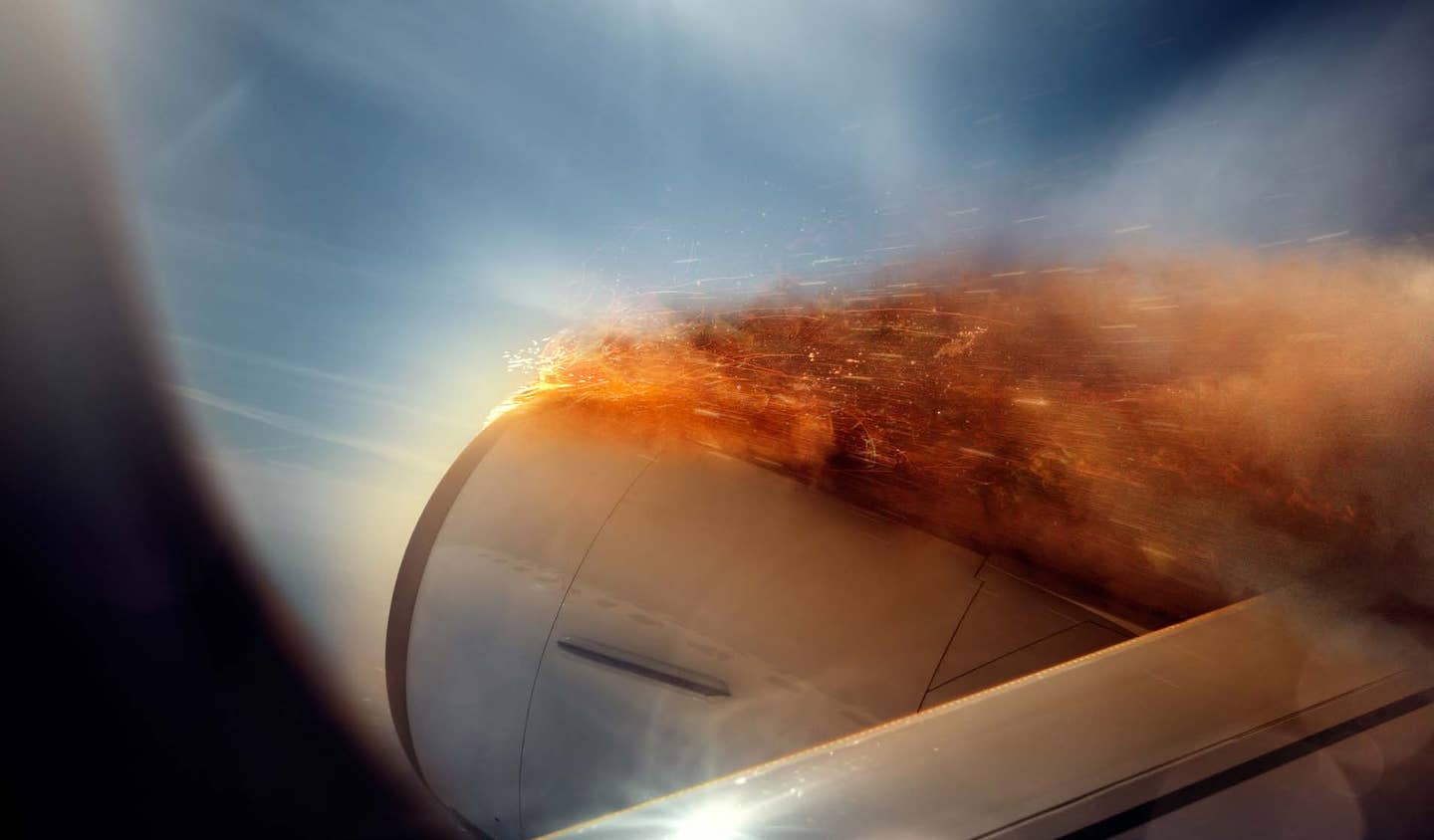
Back in my youthful exuberance days, I and another guy (whose name and face both now elude my memory) used to compete to see how short we could land a Cessna 150. The answer was, pretty short. We would come in hanging on the edge of a stall and stomp on the brakes the moment a wheel touched the runway. I felt as if we got stopped in a couple of hundred feet, though I never actually measured.
The 150 was a very forgiving airplane (and I suppose its successor, the 152, was too, but by the time the 152 came out training planes were behind me) and so you could fly these minimum-speed approaches, the airspeed indicator needle wobbling around in the position error zone, without much anxiety about something going wrong. Great things can be achieved in airplanes that make you feel confident. And great mistakes can be made, too.
Here is what may be a case in point. I say "may be" because it's always difficult to say with certainty what was going on in the cockpit before a fatal accident occurs, when there is no cockpit voice recorder to help us out; we have to rely on external evidence. In this case, the external evidence consists of some seemingly rough and erratic low-level flying. The airplane was airborne for less than a minute before it stalled and crashed.
The accident involved a student pilot and an instructor; it took place almost three years ago at Levelland, Texas, on a hot and blustery May evening. Although it was nearing 7 o'clock when the 150 took off, the temperature was still 91 degrees. A stiff wind, 28 knots gusting to 37 as measured by a meteorological reporting station at nearby Texas Tech University, was blowing from 140 degrees. The takeoff runway was 17; the crosswind component was therefore around half of the wind speed.
The National Transportation Safety Board's report on the accident cites the accounts of two eyewitnesses. The first was himself an instructor in the same flight school as the accident pilot. He had realized, after the 150 taxied out, that he had left his wallet and keys in the airplane on its previous flight. He drove out to an intersecting taxiway to try to flag the airplane down, but failed. He reported that the takeoff, which he observed from close at hand, was "abrupt and nose high." The airplane then leveled off, climbed to 50-100 feet, and made a steeply banked left turn. It sank on the downwind leg, settling to 50 feet again before climbing to 100-200 feet. At that point the instructor drove back to the flight school; he did not see the accident that occurred moments after he turned away.
A second witness was standing outside his shop on the airport. He paid attention to the little Cessna's takeoff, he said, because the wind was so strong. He saw the car beside the runway and the arm waving out the window and heard the airplane's engine go to full power. Like the other witness, he reported that the 150 was "sharply pulled into flight," flew level briefly to gain speed, and then climbed to, in his opinion, 300 feet. It then "banked hard left" -- 70 degrees, he thought -- and, after turning 180 degrees, "dove sharply" to a height of 30 feet. It then "sharply climbed" back to 300 feet before it "sharply turned left again at a 70-80-degree bank." It appeared to rock once, and then dove almost vertically to the ground near the approach end of Runway 17.
Note the witness's repeated use of the word "sharply." The airplane was being tossed around roughly -- whether by the pilot or by the wind, we don't know, though the impression, from the extreme bank angles, is that the pilot was more in charge than the wind was. In any case, the numbers -- 30 feet, 70 degrees, and so on -- should not be taken literally; witnesses' estimates are seldom accurate, especially when a fatal outcome has retrospectively heightened the significance of the event.
One can make some guesses about the reasons for the airplane's observed behavior. If it seemed to be pulled sharply into the air, the reason was probably that the wind -- the crosswind component, remember, was 14-19 knots -- was starting to push it sideways, and the pilot wanted to get it off the ground. Once airborne, it picked up sufficient speed to begin to climb. At some altitude -- the witnesses' reports differ, but let us assume that the one who was a flight instructor might have been the more accurate and that the altitude was none too high -- the airplane was racked around in a steeply banked, apparently continuous 180-degree turn onto the downwind leg.
Why such a drastic turn? One reason could have been instructional: to show the student that a coordinated downwind turn, even a very abrupt one, does not result in an immediate stall or even a rapid loss of airspeed. And indeed it did not. The airplane did lose some airspeed, however -- any airplane loses speed in a steeply banked turn, even in still air, and the tailwind may also have picked up a bit -- and it settled somewhat before resuming its climb as it flew along the downwind leg.
The C-150, with its 100 hp engine, is not a powerful airplane even on a standard day at sea level. On this particular evening the density altitude was almost 6,500 feet, and the engine could not have put out more than about 82 horsepower. With so little excess power, it would be slow to recover airspeed or altitude lost to a gust or a downdraft. As it climbed, it presumably did not accelerate much.
The airplane now had two or three cards stacked against it. Its indicated airspeed was probably not very high. It had little excess power. Finally, it was flying in a gusty following wind.
The effect of the wind under these circumstances is complex. On the downwind leg, the 150 was flying with a gusty wind coming from about 30 degrees to the right of its tail. Suppose, for argument's sake, that its indicated airspeed was 15 knots above the stalling speed. A 10-knot gust would still leave it a speed margin; a 15-knot gust -- the reported gusts were not that strong -- would bring it to its level-flight stalling speed, but since its angle of attack would not immediately change it would be able to accelerate with some loss of altitude but not necessarily any loss of control. It is angle of attack, remember, not speed, that makes a wing stall.
When the 150 made a steeply banked left turn, however, its situation became more precarious. Because the bank angle is steep, the airplane is now showing its top, not its tail, to the wind. If the wind is steady, this makes no difference, provided that the pilot keeps the angle of attack below the stalling one. But if a lull -- a negative gust -- occurs during the turn, its effect is not only to momentarily increase the indicated airspeed but also to increase the angle of attack. To the steeply banked airplane with its dorsal aspect to the wind, a sudden drop in wind speed is equivalent to an upward gust. If the wing is already close to its stalling angle of attack, it may stall despite the increase in indicated airspeed.
Is this what happened? Who knows? It's actually unnecessary to invoke exotic combinations of wind and attitude to explain a stall in the traffic pattern. People have stalled airplanes on calm days because they banked too steeply and pulled too hard, or because they got the controls crossed, which is much easier to do when the wind is blowing and the airplane appears to be sliding sideways over the ground.
What makes this accident especially puzzling is the exhibition of an uncommonly abrupt and extreme style of flying in weather conditions in which many people would hesitate even to go aloft in an airplane as light and anemic as a Cessna 150. The two don't seem to go together, especially when you consider that the instructor was 64, an age at which most pilots have outgrown the feeling that they have something to prove. Unfortunately, the NTSB's report includes no comment on whether displays of youthful ebullience while maneuvering in the traffic pattern were typical of this instructor. His colleague on the ground seems not to have considered the gyrations of the 150 sufficiently out of the ordinary for him to continue watching them.
We don't even know, finally, who was flying the airplane, but it would be a strange lesson plan that required abrupt and extreme maneuvering in the traffic pattern. A possible explanation of the 150 staying in the pattern without gaining much altitude is that the instructor caught sight of his colleague in the car beside the runway when the 150 was already in its takeoff roll; that he then saw the wallet and keys and realized that they needed to be returned; that he then said, "My airplane," and, taking the controls, racked the little trainer around with the confident bravado of one who knows the 150 well, and knows what a well-behaved and forgiving airplane it is.
This article is based on the National Transportation Safety Board's report of the accident and is intended to bring the issues raised to the attention of our readers. It is not intended to judge or to reach any definitive conclusions about the ability or capacity of any person, living or dead, or any aircraft or accessory.

Sign-up for newsletters & special offers!
Get the latest FLYING stories & special offers delivered directly to your inbox






